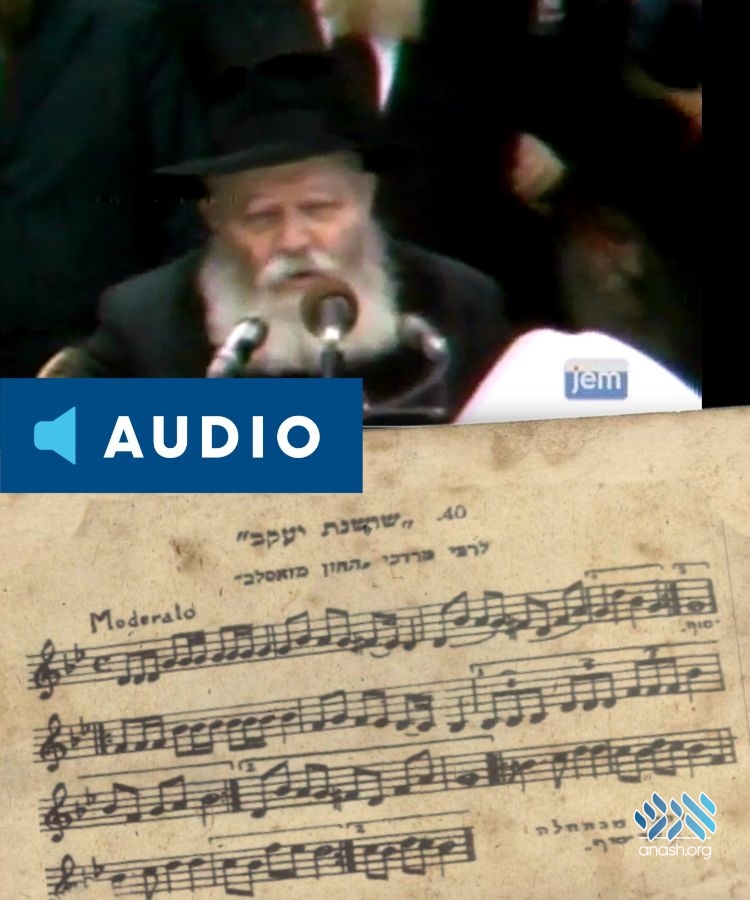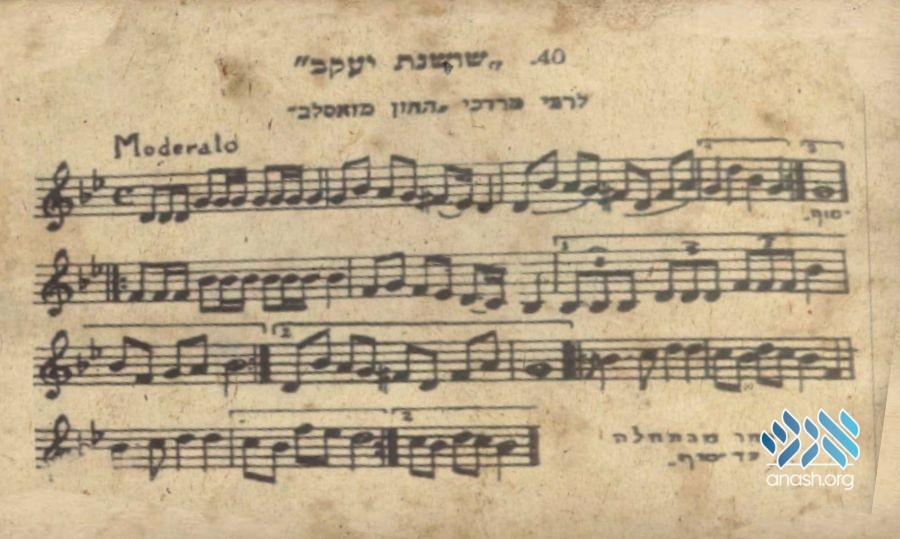An early version of Reb Levik’s famous “Hakofos Niggun” attributed to the Baal Shem Tov’s student R’ Mordechai of Zaslov has been recorded from old notes.
By Anash.org writer
Every chossid is well familiar with the famous “Hakofos Niggun” of Harav Levi Yitzchok, the Rebbe’s father. The niggun is sung by chassidim at many happy occasions, and of course at hakafos.
The niggun as we have it in Sefer Hanigunim was recorded by R’ Pinyeh Althoiz as he heard from Reb Levik. The Rebbe’s father shared a tradition that this niggun was sung at the Alter Rebbe’s hakafos.
But apparently, this niggun has an even earlier source. A variation of the niggun is attributed to R’ Mordechai of Zaslov, a student of the Baal Shem Tov and a chazzan in the town of Zaslov. R’ Mordechai, a tzaddik and a close friend of other famous talmidim of the Baal Shem Tov, would sing Shoshanas Yaakov on Purim to this tune.
The niggun, recorded by Chazan Moti Boyer, has some noticeable differences to the niggun as we know it.
R’ Mordechai of Zaslov’s nigun:


What book are those notes from?
הניגון והריקוד בחסידות
Geshuri.
Who decided that it is the same song? Just because it has a few similar notes?
At best similar…
Maskim, it’s not the same niggun. It only has one similar tenuah.
לכאורה, נגון שונה
not the same niggun.
1) just because it has 2 parts that sound the similar doesn’t mean anything. (2 niggunim of tal Yasis are exactly the same in certain parts, but its 2 different songs, וכהנה רבות to anyone with a basic knowledge of niggunim)
2) there is no zeicher of the high part – the part he Rebbe starts from.
the only thing it means is that the reb leviks niggun was composed in the same spirit/style as niggunim of Talmidei habal shem tov, which fits very well into singing it by the alter Rebbe
Harav Yoel Kahn זצ”ל also sang the nigun with an extra stanza. He said that where the Rebbe usally began was the second stanza. And he sang the first stanza. He said that it’s sung as a nigun simcha but it’s also a nigun dveikus and you hear that in the first stanza. When he sang it we were able to hear the dveikus. He sang it a bit slower as well.